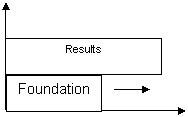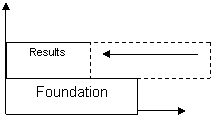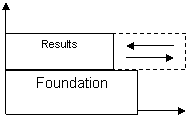
Managing Progress and Expectation
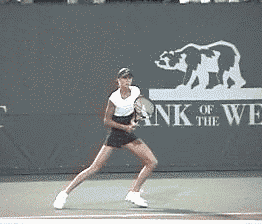 One of the most difficult jobs for a coach is managing expectation. Expecting too little of a player or too much can be equally damaging to a player’s progress. The other mix in the equation is players' own expectations, which they need to learn how to manage and our job as coaches is to give them tools to help this management process. Similarly the coach may well find he also has to deal with the pressures of 3rd party expectations such as parents, management companies, sponsors, governing bodies or even imaginary pressures.
One of the most difficult jobs for a coach is managing expectation. Expecting too little of a player or too much can be equally damaging to a player’s progress. The other mix in the equation is players' own expectations, which they need to learn how to manage and our job as coaches is to give them tools to help this management process. Similarly the coach may well find he also has to deal with the pressures of 3rd party expectations such as parents, management companies, sponsors, governing bodies or even imaginary pressures.Wouldn't it be great if all parties involved understood expectation in the same way and could discuss it using the same method of evaluation?
This graph also has the added advantage of giving players hope during the bad times and a kick up the proverbial if they become complacent during a good run of results.
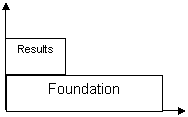 Building foundation – results lagging Important to practice and play matches with a positivism that one never knows when it will turn around. Cultivate a feeling that progress is being made in your foundation |
Anxiety is high – anxiety and stress higher during this period due to poor results. The longer a player has been playing the worse this generally will be unless convinced the process will bring results eventually. Confidence is low – Hard to believe in yourself when losing often Expectation is low – Cannot see yourself winning. |
Graph 2 : Player gets on a roll and confidence is so high that player overshoots their foundation – results are achieved at a level higher than expected.
|
|
Confidence is high – Everything clicks into place and luck runs with you Expectation is high – Winning is a habit. Feel like you cannot lose Anxiety is low – Belief is part of the foundation. If a player does not get complacent or begin to over expect this is the perfect time to quickly close the gap between the base and the results as it is easy to learn when confident. Time to work harder because sport is most fun when flying with momentum |
|
|
Confidence is Low – Player will often bluff, blame and make excuses for this bad spell. Expectation is high – The player tends to be sulky and ask questions like ‘ How can I lose to this guy? Anxiety is high – High stress detracts from good practice further damaging game recovery. |
Graph 4: The key is the attitude to the work and the understanding. Players and coaches need a spirit of continued respect for the process of learning.
|
It is important to realize that equality between the foundation and results is never found. The ideal is steady improvement to the foundation and the results tend to fluctuate a few notches either way depending on confidence levels
|
Basic Confidence is high and the dips are less dramatic – If the work ethic remains constant the process remains important not only results Expectation is relative to situation – The player and those around him have a good grip on where a player is and what can be achieved if things go right on the day. Positive but not predictive! Anxiety is generally under control – High stress detracts from good practice and, although no player is ever without stress, the belief in their program keeps a more laid-back attitude to challenges most of the time. |
Summary Examples
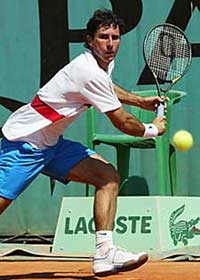
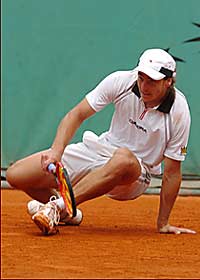
The pressure builds as his lifestyle is lived like he will be top 100 forever, yet he knows deep down that he cannot sustain his ranking because his foundation is not that good and, worse still, he is not doing anything constructive to improve the foundation. The inevitable happens and he loses a few first rounds and confidence drains. Doubt creeps in and over a period of nine months his ranking drops back to 180, steadies for a while but the attitude is still poor and he bluffs himself that he will soon be back when his problems pass and he can work harder again. Everything becomes past and future-based, with the key ingredient of working hard consistently day-by-day missing.
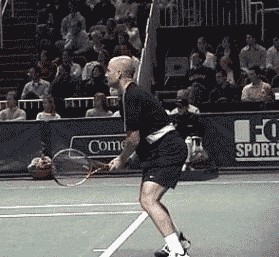 The player becomes unsure of where his foundation actually is and cannot establish this without the hard work and the ranking slips to 400. It becomes sure that the player can never recover unless he changes his attitude and work ethic and even then the foundation and confidence is so shattered that fully repairing the foundation is near impossible. Andre Agassi and Vince Spadea are good examples of slipping way beyond their foundations in a negative direction before getting it together to re-emerge stronger than ever.
The player becomes unsure of where his foundation actually is and cannot establish this without the hard work and the ranking slips to 400. It becomes sure that the player can never recover unless he changes his attitude and work ethic and even then the foundation and confidence is so shattered that fully repairing the foundation is near impossible. Andre Agassi and Vince Spadea are good examples of slipping way beyond their foundations in a negative direction before getting it together to re-emerge stronger than ever.
The graph is an excellent visual tool to help all involved with a player to discuss results and progress with a similar understanding and using the same method of evaluation.
by David Sammel

